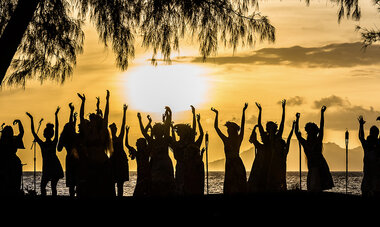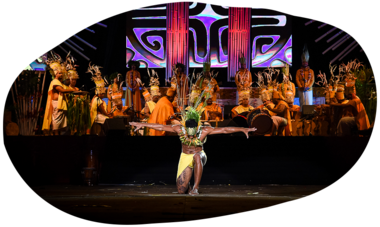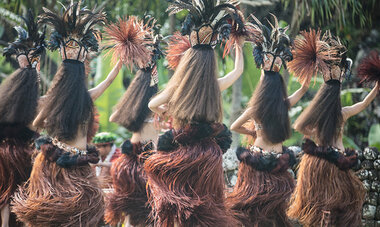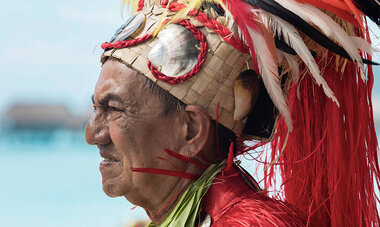
Tahitian Dance ('Ori Tahiti): The Cultural Treasure of French Polynesia
Tahitian dance, known as 'ori Tahiti, is an “artistic, social, and cultural art form coming from Tahiti and the Society Islands (Bora Bora, Moorea, Raiatea, Taha’a, Huahine…).” It is the most widely practiced type of dance in French Polynesia.
The traditional dance of Tahiti has even conquered most of the world, with over 30,000 regular dancers across all continents. Whether you live in Latin America, the United States, France, or Japan, you will easily find a dance school offering 'ori Tahiti lessons if you live near a large city.

Tahitian dance: the heart of Polynesian identity
'Ori Tahiti is a big part of Tahitian and Polynesian culture. It's a mix of traditional dance, music, percussion, spoken performance ('ōrero), singing, and costumes. The dance itself symbolizes the connection between Tahitian people and te fenua, the land that feeds them.
To express this bond, the dancer's body is symbolically divided in two: the legs represent the connection to the earth, while the body, head, and arms play with the elements—the ocean, the wind, and the skies.

Heiva i Tahiti, the best Polynesian dance shows
From a young age, Polynesian children learn 'ori Tahiti, just as they learn reo Ma'ohi, the Tahitian language. Dance and language are the pillars of their cultural identity.
During the Heiva des écoles (Heiva for schools), young children are performing. As the young dancers progress in skill, their movements become more precise, the meaning behind the dance moves comes to light, and you begin to feel the deep connection to nature and culture behind each step.
During the Heiva i Tahiti, the professional groups are made up of dozens of dancers, sometimes over a hundred. Nothing is more beautiful than seeing choreography come to life on stage. The lower body dances rhythmically, while the upper body is entirely devoted to graceful movement and expression. A dialogue unfolds between men and women, and between the drums and the voices.

Codified dances and choreography
Five distinct types of Tahitian dance are traditionally identified: 'ōte'a, 'aparima, hivināu, pā'ō'ā & pāta'uta'u.
The 'ote'a is undoubtedly the most iconic form of 'ori. It is probably what you imagine when you think of the traditional Tahitian dance. This ancient warrior haka, once reserved for men, has evolved to include women ('ōte'a vahine) and mixed groups of dancers ('ōte'a āmui). These performances are very rhythmic, powerful, precise, and require great mastery of steps and movements.
The most moving dance is perhaps the 'Aparima. It is a mime based on the music or lyrics of the song being performed. The arms and hands, supported by subtle movements of the hips of the female dancers, become a form of language. Each aesthetic and graceful movement is a word, forming a phrase and telling a story. The Tahitian dance becomes a form of writing, casting a spell over the audience.

The Dance of Words
Speaking of storytelling, ancient Polynesian society did not have a written language. However, their knowledge was never lost between generations. Stories of gods, epic tales of their ancestors, family lineages, and celestial maps were all passed down from one generation to another.
One of the forms of 'ori Tahiti, the Pāta'uta'u, served this purpose. Sung by a soloist in a rhythmic, psalmodic style, this Polynesian dance was created as a mnemonic device. The choreography mirrored the rhythm, helping to memorize and transmit history.
The Living History of 'Ori Tahiti and Tamure
During your stay, you will often hear people talk about Tāmūrē. Think of it as a synonym for 'ori Tahiti that allows for certain modern influences.
When you see a dance group performing - especially in hotels - you will hear several influences from other Polynesian cultures, such as the Marquesas Islands. But the cultural background remains the same: a beautiful, living expression of identity and history, which, like tattooing and language, almost disappeared during the missionary and colonial era. Polynesian dance has returned stronger, uniting dancers and reconnecting people to their shared heritage. Each step tells that story. Such intensity can only be experienced here, in The Islands of Tahiti.